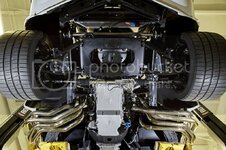phantomjock
Well-known member
BBShark -
Nice CAD work. SW I guess? Do yo have the FEA module too? Be nice to check the loads on the mount, but I have no idea what you'd use as a starting load.
Just wanted to comment on the nice work.
Cheers - Jim
Nice CAD work. SW I guess? Do yo have the FEA module too? Be nice to check the loads on the mount, but I have no idea what you'd use as a starting load.
Just wanted to comment on the nice work.
Cheers - Jim

